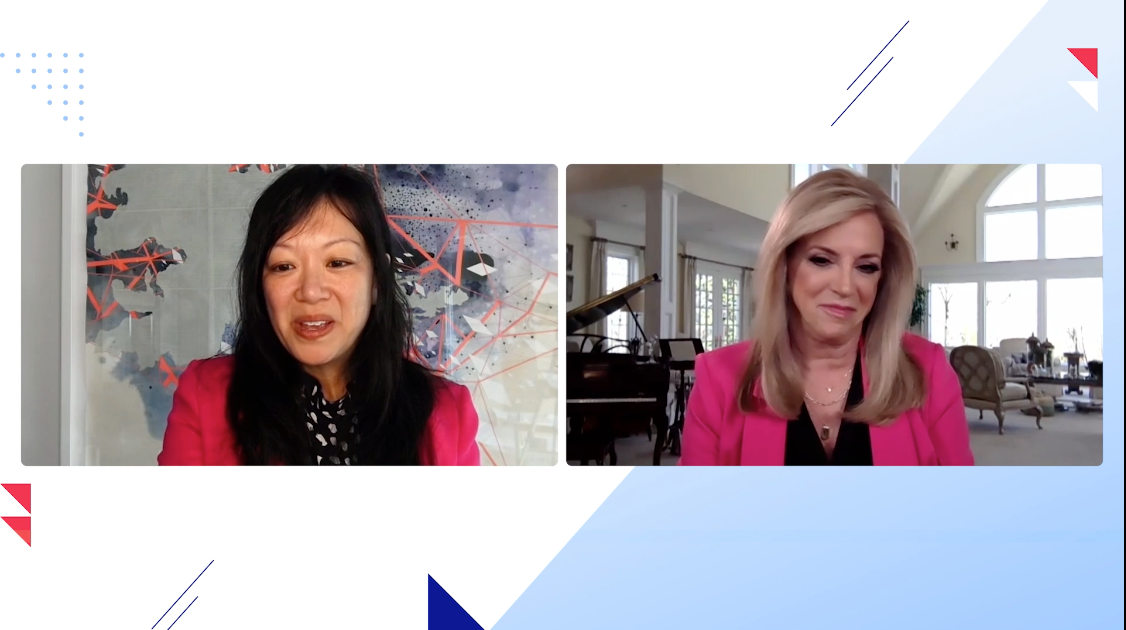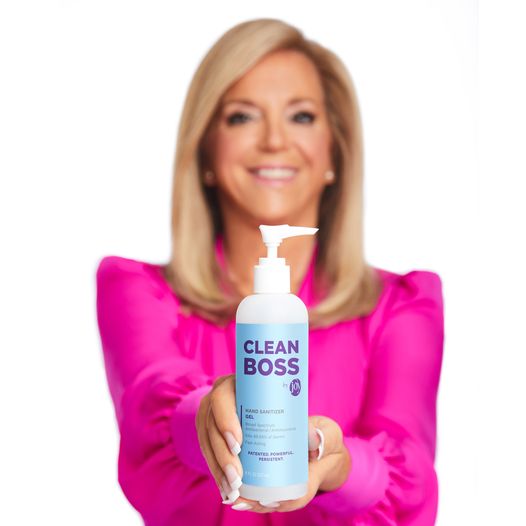The future of retail: lessons from entrepreneur and inventor Joy Mangano
Joy Mangano shares her journey from QVC to omnichannel retail.
Joy Mangano shares her journey from QVC to omnichannel retail.
From a divorced mom of three working as a clerk at American Airlines to a celebrity inventor that inspired the movie "Joy" starring Jennifer Lawrence. Joy Mangano, the creator of the Miracle Mop, was the first to sell millions and millions of her products on live television from the '90s onward. She essentially wrote the playbook on inventing, launching, and selling millions of products to mainstream consumers, and some call her one of the world's original influencers.
But Joy has evolved her approach to selling along with changing consumer preferences. She's still inventing and has a portfolio of successful products like Huggable Hangers and, more recently, CleanBoss. She sells these through an omnichannel strategy that includes Instagram, brick-and-mortar stores, and even a Broadway show.
I recently hosted a half-hour conversation with Joy about her journey and the lessons retailers can learn from it.

Consumer product marketing and sales have moved away from relying on a single dominant channel: TV. "You can't just be in one place anymore," says Joy. Instead, you now need to meet the consumer at several different touchpoints—what Joy refers to as the "circle of commerce"—before they make a purchase.
When Joy started, aside from going to a physical store, TV—and to a lesser extent radio—was the only way for consumers to discover new products. This situation gave brands and retailers enormous influence over the products that got marketed and sold. Over a span of just a few decades, this model has fallen apart.
We now live in a world of "boundaryless" shopping where customers travel across many touchpoints to discover products before making a purchase. Traditional TV takes an ever-shrinking role in this process. So much so that linear broadcasts don't reach 23% of Americans aged 25-54 at all. This decline means retailers need to rethink their marketing strategy and move to the same channels as their target customers.

An overview by Nielsen of the total time American consumers spent consuming media, further broken down per device and channel.
The structure of Joy's company reflects this change. Her business has several pillars, such as Joy Live for digital and social, Joy Brands for retail, wholesale, and licensing, and Joy Studios for productions like a network TV show and a Broadway musical.
Together, these pillars span the complete "circle of commerce." For example, for her new product CleanBoss, a consumer might encounter it first in her musical, then hear Joy talking about it on late-night TV, and eventually see it in a physical store but decide to buy it online through a mobile device. That's what a modern customer journey can look like. All the different touchpoints help consumers connect with "the history behind the product" before purchasing.
Set up your circle of commerce in days with Segment
With a Customer Data Platform (CDP) like Segment, you can collect customer data across all your apps, platforms, and locations within days—sometimes even hours. It's easy to set up and connects instantly to hundreds of third-party tools and services, so you quickly get a complete picture of your customer across all touchpoints.
To create a product that large numbers of consumers will buy, it has to solve a real problem for them in a way they understand. Such understanding requires empathy. You need to be able to, as Joy says, see "life through their eyes."
This mindset of customer empathy should inform every step of a product's journey: innovation, marketing, and sales. It requires a review of all aspects of your business—the products you stock, how you communicate about them, the shopping experience—through a lens of love for your consumer's world.

"Everything is a product," Joy says. When she experiences a problem in her own life or hears about one from friends or fans, she immediately thinks about the kind of product that could fix it. In the case of the Miracle Mop, wringing a mop was hard, and doing so would get your hands dirty. When bringing it to market, she clearly and repeatedly explained to the consumer how her product solved such problems: in her TV appearances, on the packaging, and through the design of the product itself.
Inspiration for her Huggable Hangers—another mega-hit product, one endorsed by Oprah Winfrey—came from her clothes falling off regular hangers and the unnecessary space they took up in her wardrobe. While those might seem like minor inconveniences, Joy was convinced customers would value a solution to such problems and brought the product to market. Sales proved Joy's intuition was right, with more than 300 million sold according to the Wall Street Journal in 2010, and over a billion to date, according to Joy.
Consumer preferences can and will change. Sometimes in minor ways, others times drastically and suddenly, as we've seen most recently due to the COVID-19 pandemic. You have to stay flexible in your approach so that when this happens, you can "shift your skis" quickly, as Joy likes to say.
Joy did precisely that when the coronavirus emerged. At that point, CleanBoss had been in low priority development for two years. The product line turned out to be perfect for the new normal of the pandemic, so her team quickly shifted focus to its development and brought the new line to market as fast as they could.

The retail industry has traditionally been slow to adapt to changes. Joy recalls large chains deciding in May what products to stock for January of the following year, an eternity in a world of Amazon's same-day delivery and constant product innovation.
Similarly, many retailers didn't fully embrace digital until the pandemic forced them to. But the sector has woken up, and Joy sees digital transformation happening at great speed now. Most retailers pay more attention to their digital experience and use it to tie the circle of commerce together.
Joy gives an example of a recent experience she and her daughter had with Target. Through the retail chain's website, they booked a personal shopper to buy them several items. A specific brand of wipes they wanted was out of stock, so the shopper gave them a call, proposed an alternative, and delivered it to their home just 30 mins later.
Respond to changing circumstances quickly with Segment
By standardizing customer data and making it accessible in real-time to the entire organization, Segment allows every team in your organization to respond to changing customer needs quickly. You can launch or change campaigns within hours and experiment with new tools without needing engineers.
When listening to Joy's journey and the products she has created, a final lesson for sales success becomes apparent: tell great stories.
When speaking at a flea market early on in her career, 10 out of 20 attendees would buy her mops after hearing her story. Later, through her TV appearances, millions of people would do so too. And today, in her interview with us, the process is still the same. Joy tells a captivating story, relates it to the world of her audience, and, along the way, convinces you of her point, sells you a product, or, most likely, does both.

Our annual look at how attitudes, preferences, and experiences with personalization have evolved over the past year.